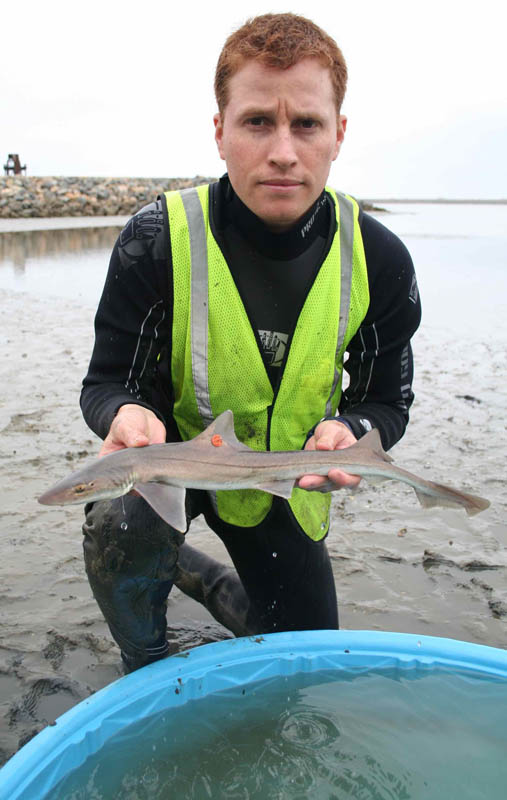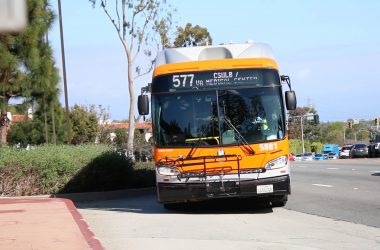Lowe, along with graduate students Mario Espinoza and Thomas Farrugia, and some undergraduate students, is experimenting to restore the Bolsa Chica wetlands to recover the habitats of coastal species.
A channel was dredged into Bolsa Chica Beach two years ago to open into Huntington Beach. An inlet was created to allow the water to circulate with the tide coming in from the ocean.
Lowe, Espinoza, Farrugia and undergraduate students working on the project discovered that in the two years since the Bolsa Chica wetlands opened, seven different shark, ray and skate — jawed fish with paired fins, paired nostrils, scales, two-chambered hearts and skeletons made of cartilage rather than bone — species have found their way into the habitat. The species include leopard sharks, gray smooth hounds, round stingrays, bat rays, shovelnose guitarfish, butterfly rays and thorny back rays.
In their research, they use three methods. First they go out every month to do beach seines, which involves two students dragging a net out from shore, making a loop in the water and pulling it out to the beach. They count and measure all of the fish that they catch.
The second method is acoustic telemetry. A small acoustic transmitter is placed on the sharks and rays, and students follow them on a boat for three days to observe the moving patterns of the animals. Acoustic telemetry helps them study the short-term movement patterns of the animals.
If they discover that the pregnant animals use the warm water in the Bolsa Chica wetlands for their embryos to grow faster, then it is a “really important finding,” said Lowe. By restoring Bolsa Chica wetlands, they would be restoring a lost breeding habitat for the animals.
In studying the behavior of the gray smooth-hounds, Espinoza has discovered the animal stays a week to a month in the basin. Espinoza hypothesizes that the fish use the wetlands during the summer when the water is warm and leave in the winter when the water is cold.




